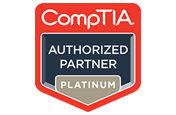We're open through the holidays to support your upskilling goals — Which training do you want to book?
We're open through the holidays to support your upskilling goals — Which training do you want to book?
Unable to find what you're searching for?
We're here to help you find itCompTIA Network+ (N10-009) Course Overview
The CompTIA Network+ (N10-009) course offered by Koenig Solutions is designed to equip you with essential skills to manage and troubleshoot network infrastructures. You will learn to establish Network connectivity by deploying wired and wireless devices, understand and maintain Network documentation, and grasp the purpose of various network services. Additionally, you will delve into key concepts like Cloud and Virtual networking, monitor network activity, and implement network security techniques. This course is ideal for those with 9-12 months of hands-on experience or those already CompTIA A+ certified. By the end, you will be well-prepared to ace the CompTIA Network+ certification exam.
Successfully delivered 34 sessions for over 119 professionals
Purchase This Course
USD
View Fees Breakdown
| Course Fee | 2,950 |
| Exam Fee | 250 |
|
Total Fees (without exam) |
2,950 (USD) |
USD
View Fees Breakdown
| Course Fee | 2,250 |
| Exam Fee | 250 |
|
Total Fees (without exam) |
2,250 (USD) |
USD
View Fees Breakdown
| Flexi Video | 16,449 |
| Official E-coursebook | |
| Exam Voucher (optional) | |
| Hands-On-Labs2 | 4,159 |
| + GST 18% | 4,259 |
|
Total Fees (without exam & Labs) |
22,359 (INR) |
|
Total Fees (with Labs) |
28,359 (INR) |
Select Time
Select Date
| Day | Time |
|---|---|
|
to
|
to |
♱ Excluding VAT/GST
You can request classroom training in any city on any date by Requesting More Information
Inclusions in Koenig's Learning Stack may vary as per policies of OEMs
Scroll to view more course dates
You can request classroom training in any city on any date by Requesting More Information
♱ Excluding VAT/GST
*Inclusions in Koenig's Learning Stack may vary as per policies of OEMs
Suggestion submitted successfully.
Koenig Learning Stack
Inclusions in Koenig's Learning Stack may vary as per policies of OEMs



